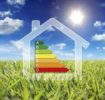Thermal Imaging and Air Tightness Testing
Thermal Imaging and Air tightness testing together are a potent method of assessing the thermal efficiency of a property. Both conductive heat loss and air leakage can be evaluated from a full survey report. Air Tightness and Thermal Imaging are important quality control measures when building or renovating a house.
Domestic Thermal Imaging Surveys
Four out of five homes have significant Thermal inefficiencies which can be easily and cost effectively improved. By scanning buildings with infrared imaging camera equipment, we can capture heat loss in the form of a picture called a ‘Thermal Image’. From within these images we can acquire and evaluate information that can be used to identify where energy cost savings can be made.
What is a Thermal Imaging Survey?
Thermal Imaging Surveys have been designed to assess the efficiency of a property by identifying areas of conductive heat loss, air leakage, cold bridging and moisture intrusion.
Conductive heat losses are almost often due to missing, damaged or water saturated insulation within the walls or roof which will effect how well your property is insulated and how well it retains the heat within the ‘building envelope’. (The building envelope is basically the construction shell of the property).
Almost anywhere within the building envelope i.e. doors, windows, chimneys, brickwork, there is potential for air leakage and thus heat loss. The amount of air leakage from a building is important to maintain comfort and the cost effective operation of the heating and cooling systems. Many factors can affect the air tightness of a property so, by identifying where air leakage falls outside the accepted range, we can expose defects which can then be brought to the attention of the owner.
Moisture intrusion often occurs through small cracks in the building structure where water becomes trapped in the impermeable building materials. Potential health problems associated with mould are dependent on the concentration of spores in a given area and can result in allergic reactions and asthma. The root cause of condensation, another form of moisture, is more often than not, is an imbalance between the heating and ventilation systems, and the insulation in the fabric of the building.
What is Air Leakage
Air leakage is the uncontrolled flow of air through gaps and cracks in the fabric of dwellings (sometimes referred to as infiltration, exfiltration or draughts). This is not to be confused with ventilation, the controlled flow of air into and out of the dwelling through purpose-built ventilators that is required for the comfort and safety of the occupants.
Excess air leakage leads to unnecessary heat loss, discomfort from cold draughts and increased energy costs.
With more stringent building regulations requiring mandatory pressure tests on all new build dwellings, reducing air leakage, or improving ‘air tightness’, is an increasingly important issue.
The aim should be to ‘build tight – ventilate right’. Buildings should not be too airtight and it is, however, essential to ensure appropriate ventilation.
The overall air tightness of the finished dwelling depends heavily on getting the original design and specification right. The designer’s role is therefore critical.
